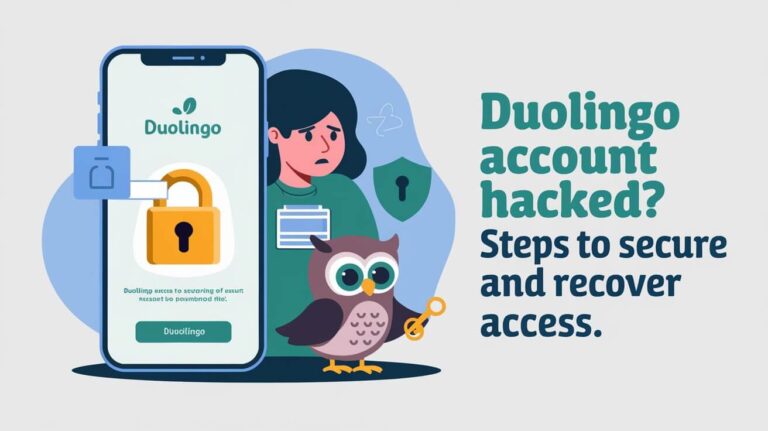Want to learn Thai but can’t find it on Duolingo? Don’t worry, you’re not alone. Thai is a cool language that many people want to pick up for trips, work, or just for fun.
Thailand draws tons of tourists every year. They come for the culture, food, and amazing sights. Knowing some Thai can make your visit even better. Thai is the main language in Thailand and parts of nearby countries.
Learning Thai isn’t just for tourists. It’s great if you live or work in Thailand too. Speaking Thai can help you fit in and maybe even boost your career. The language itself is pretty neat, with its own special alphabet and tones.
Exploring the Availability of Thai on Duolingo
So, if Thai is such a valuable and in-demand language, why isn’t it available on one of the most popular language learning platforms, Duolingo? The short answer is that Duolingo simply hasn’t added Thai to its roster of available courses yet.
Duolingo is known for offering a wide range of language options, from the more commonly taught languages like Spanish, French, and German, to less common ones like Klingon, High Valyrian, and Esperanto. However, there are still many languages missing from the platform, including Thai, Khmer, Tagalog, Cantonese, Serbian, and others.
The reasons behind Duolingo’s language selection process are not entirely clear, but it’s likely a combination of factors, including the availability of high-quality learning resources, the size of the target learner population, and the overall demand for the language. Thai, for example, may not be as widely studied by Duolingo’s primarily English-speaking user base as some of the more commonly taught European languages.
Not being on Duolingo doesn’t mean it’s impossible or too hard to learn. Many great resources exist for learning Thai. We’ll explore these in the next part.
Finding Alternatives to Learn Thai Without Duolingo
If you’re disappointed that Duolingo doesn’t offer Thai lessons, don’t despair! There are plenty of other high-quality apps, websites, and resources that can help you learn the language. Here are some of the top alternatives to consider:
Ling App
The Ling App is a popular and comprehensive language learning platform that does include Thai as one of its available courses. Ling uses a combination of interactive exercises, audio lessons, and even a conversational chatbot to help users build their Thai vocabulary, grammar, and conversational skills. The app is designed for learners of all levels, from complete beginners to advanced speakers.
One of the standout features of Ling is its focus on practical, real-world language use. Rather than just memorizing vocabulary words, the app emphasizes learning phrases and expressions that you can actually use in everyday situations. The lessons are also gamified, making the learning process more engaging and enjoyable.
Clozemaster
Clozemaster is a unique language learning app that uses a “cloze” or fill-in-the-blank approach to help users build their vocabulary and reading comprehension. The app offers thousands of sentences in Thai, with the key words missing, and challenges learners to fill in the blanks based on the context.
This method is particularly effective for building your Thai vocabulary, as you’re learning words in context rather than just as isolated terms. Clozemaster also has a more game-like feel than some other language apps, with points, leaderboards, and daily practice goals to keep you motivated.
Pimsleur
If you’re more of an auditory learner, Pimsleur is an excellent option for learning Thai. The app and audio course use a conversational approach, with native Thai speakers guiding you through realistic dialogues and conversations.
Pimsleur’s lessons are structured in 30-minute sessions, making them easy to fit into your daily routine. The app also includes supplementary features like flashcards and quizzes to reinforce what you’ve learned. While Pimsleur may not be as comprehensive as some other options, it’s a great way to build your listening and speaking skills in Thai.
Mango Languages
Mango Languages is another app-based language learning platform that offers Thai as one of its many course options. What sets Mango apart is its focus on practical, conversation-based learning.
The app’s lessons cover a wide range of everyday topics, from greetings and basic phrases to more advanced discussions around culture, travel, and business. Mango also uses speech recognition technology to help you improve your pronunciation and conversational fluency.
While Mango does require a subscription, many public libraries and educational institutions offer free access to the app, so it’s worth checking if you have that option.
HelloTalk
For a more immersive and interactive Thai language learning experience, consider HelloTalk. This app connects you with native Thai speakers who are interested in practicing their English (or any other language) in exchange for helping you learn Thai.
Through text, voice, and video chats, you can engage in real-time conversations and get personalized feedback and corrections from your language partners. HelloTalk also has features like a built-in translator, vocabulary lists, and the ability to share “moments” (similar to social media stories) to showcase your language progress.
Supplementary Resources
In addition to these dedicated language learning apps and platforms, there are also a variety of other resources you can use to supplement your Thai studies:
- YouTube channels like “Learn Thai with Mod” and “ThaiPod101” offer free video lessons and tutorials.
- Websites like “Learn Thai From a White Guy” and “ThaiLanguage.com” provide comprehensive lessons, vocabulary lists, and cultural insights.
- Language exchange apps like Tandem and Conversation Exchange can connect you with Thai language partners for one-on-one practice.
- Flashcard apps like Anki allow you to create custom decks to memorize Thai vocabulary, phrases, and characters.
The key is to experiment with a variety of resources and find the ones that work best for your learning style and goals. Mixing and matching different apps, websites, and learning methods can help you build a well-rounded Thai language skill set.
Building a Successful Thai Language Learning Plan
Whether you’re a complete beginner or have some prior experience with the Thai language, it’s important to have a structured and comprehensive learning plan to help you achieve your goals. Here are some tips for building an effective Thai language learning strategy:
Start with the Basics
Begin by mastering the fundamentals of Thai, such as the writing system, pronunciation, and basic vocabulary and phrases. This will provide a solid foundation that you can build upon as you progress. Resources like Ling App and Pimsleur are great for this initial stage of learning.
Immerse Yourself in the Language
One of the most effective ways to learn a new language is to immerse yourself in it as much as possible. Listen to Thai music, watch Thai TV shows or movies, and surround yourself with the language whenever you can. Apps like HelloTalk can also help you practice conversation with native speakers.
Practice, Practice, Practice
Consistent practice is key to becoming proficient in Thai. Set aside dedicated time each day to work on your language skills, whether it’s through flashcard reviews, listening exercises, or conversational practice. The more you use the language, the more comfortable and confident you’ll become.
Celebrate Small Wins
Learning a new language can be challenging, so it’s important to celebrate your progress and small victories along the way. Even if you’re just starting to recognize basic words or put together simple sentences, acknowledge these achievements to stay motivated and inspired.
Stick to a Routine
Developing a regular study routine is crucial for long-term language learning success. Try to set aside the same time each day for your Thai practice, and make it a consistent habit. This will help reinforce what you’ve learned and keep you on track.
Supplement with Additional Resources
While apps and online courses can be incredibly useful, you may also want to consider supplementing your learning with other resources, such as textbooks, conversation groups, or in-person classes. This can provide a more well-rounded and comprehensive approach to mastering Thai.
The Benefits of Learning Thai Language
Investing the time and effort to learn Thai can bring a wealth of benefits, both personal and professional. Here are just a few of the ways that learning this language can enrich your life:
Enhanced Travel Experiences
Being able to communicate in Thai, even at a basic level, can greatly enhance your travel experiences in the country. You’ll be able to navigate more easily, connect with locals, and immerse yourself in the culture in a deeper way.
Improved Cultural Understanding
Learning the Thai language gives you a window into the country’s rich cultural heritage and traditions. You’ll be able to better appreciate the nuances of Thai customs, etiquette, and values, leading to a more meaningful and fulfilling experience.
Professional Advantages
If you’re living, working, or doing business in Thailand, being able to speak Thai can open up a world of professional opportunities. It demonstrates your commitment to the country and can help you build stronger relationships with colleagues, clients, and partners.
Personal Growth and Fulfillment
The process of learning a new language like Thai can be incredibly rewarding and personally fulfilling. It challenges your brain, expands your worldview, and gives you a sense of accomplishment and pride.
Final Thoughts
While it’s disappointing that Duolingo currently doesn’t offer Thai language lessons, there are plenty of other excellent resources available to help you learn this fascinating language. By exploring alternatives like Ling App, Clozemaster, Pimsleur, and Mango Languages, you can build a comprehensive and effective Thai language learning plan that suits your needs and preferences.
The future of Thai on Duolingo remains uncertain, but the platform’s language offerings are constantly evolving. As the demand for Thai language learning continues to grow, it’s possible that Duolingo may eventually add the language to its roster. In the meantime, don’t let the absence of Thai on Duolingo deter you from pursuing your language learning goals. With the right approach and resources, you can become a proficient Thai speaker and reap the many personal and professional benefits that come with mastering this beautiful language.







